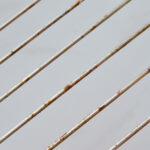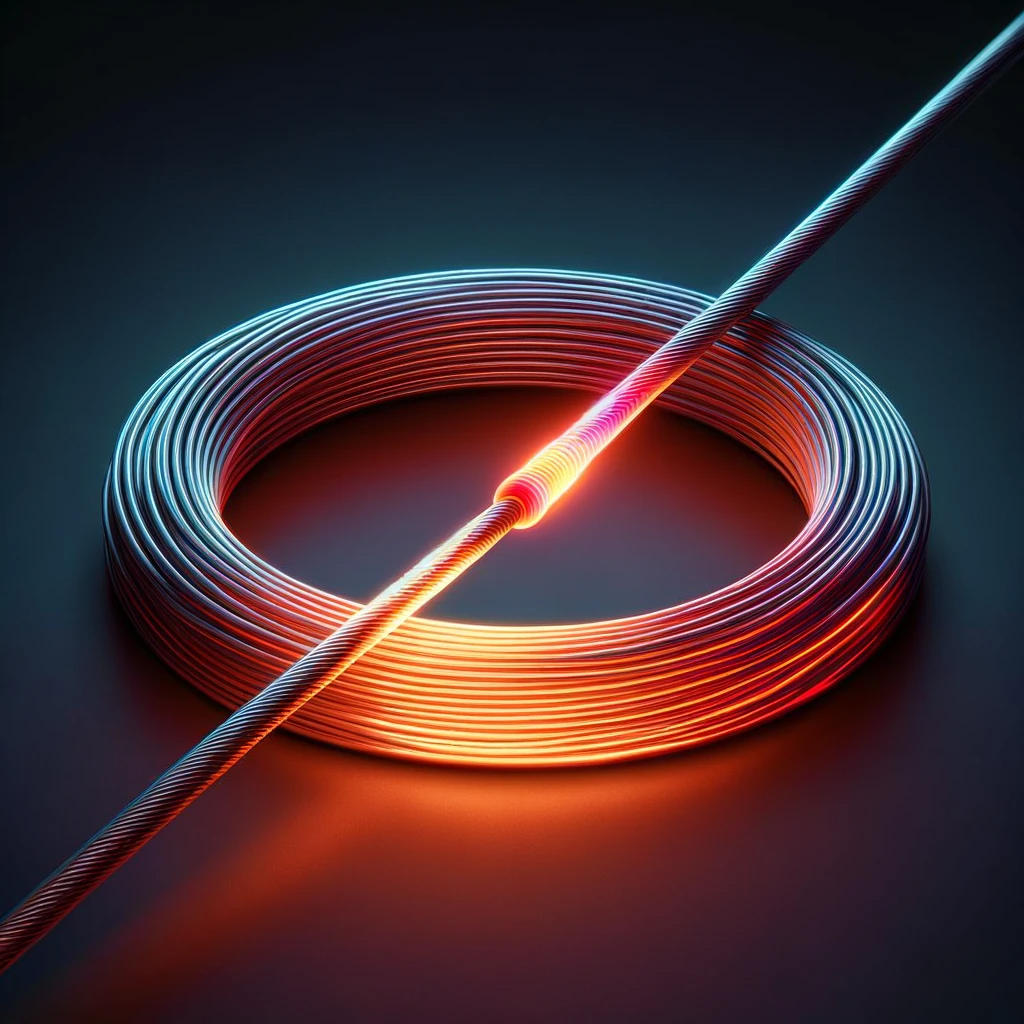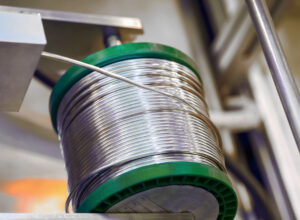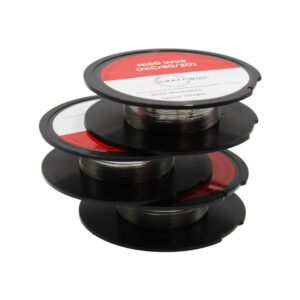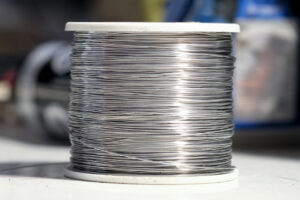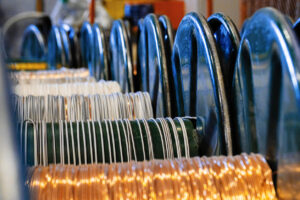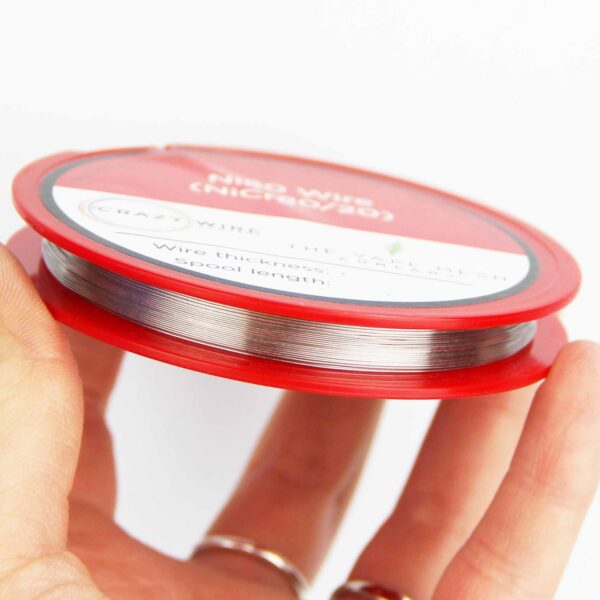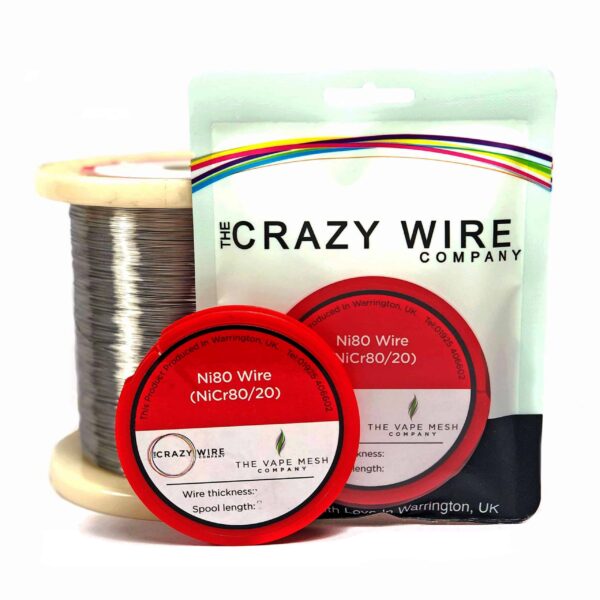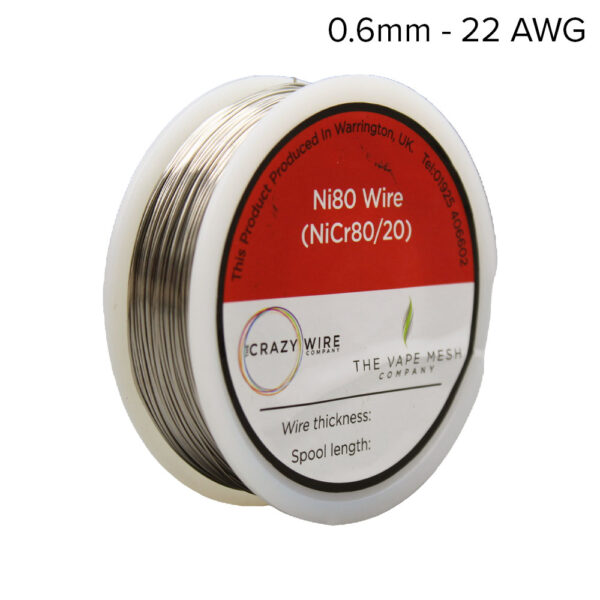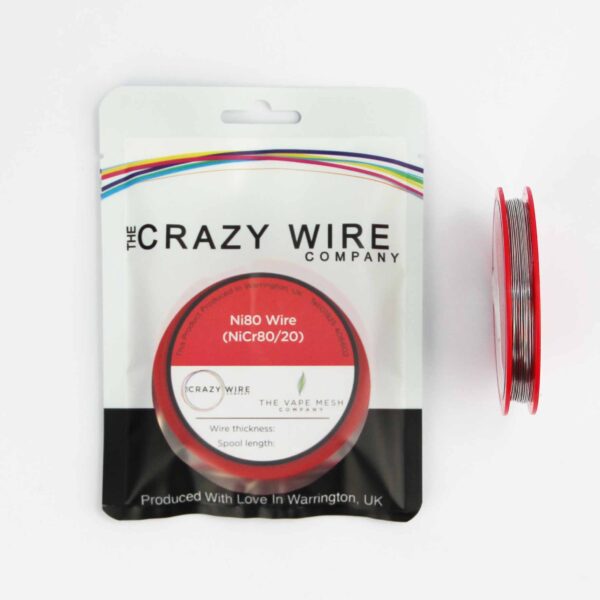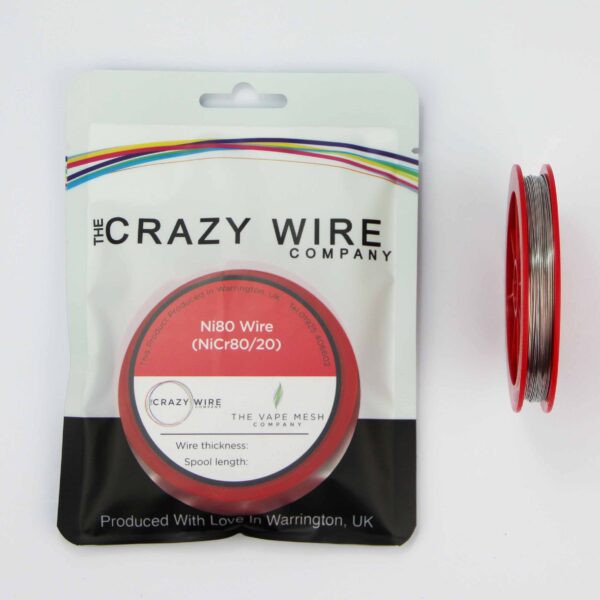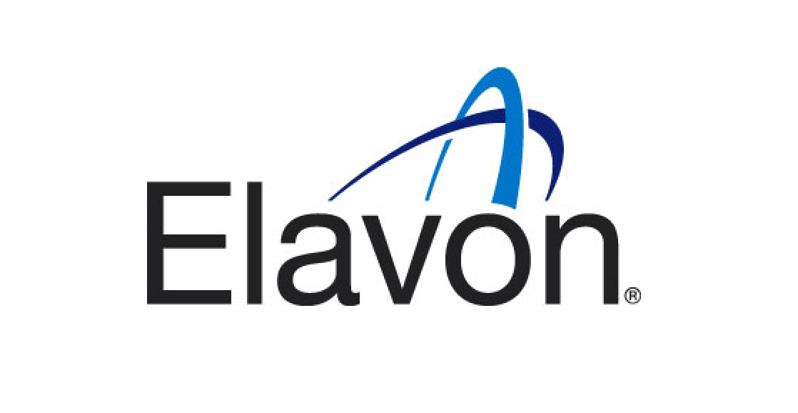When it comes to the functionality and safety of electrical and heating elements, knowing the temperature limits of the materials you’re working with is crucial. Among these materials, Nichrome wire stands out for its widespread use in various heating and electrical applications.
From consumer appliances to industrial furnaces, this wire is known for its ability to withstand and emit high temperatures. It is essential for anyone designing, using, or maintaining devices incorporating Nichrome wire to understand how hot it can get and what factors influence it.
We explore the limits, applications, and precautions necessary to safely and effectively use Nichrome wire in this blog post.
Let’s get into it…
Exploring Nichrome Wire
Nichrome wire, which is primarily composed of nickel (about 80%) and chromium (about 20%), is used for applications requiring high resistance and heat tolerance. In high-temperature settings, this alloy excels.
Composition: Nickel and chromium combine to give Nichrome wire its characteristic resistance to oxidation and corrosion. In applications where the wire is exposed to heat for a long time, this resistance is crucial.
Electrical Resistance: Its high electrical resistance is one of the most notable properties of Nichrome wire. When an electric current passes through it, its resistance translates into heat, making it an ideal material for heating elements. Over a wide range of temperatures, the wire’s resistance remains relatively stable.
Durability at High Temperatures: It is possible to use Nichrome wire at high temperatures without it degrading. In environments where sustained heat is required, and other materials may fail or degrade, its durability is essential.
Nichrome wire’s inherent properties, such as its resistance, stability, and durability, make it an excellent choice for a wide variety of applications. Both consumer and industrial products rely on its ability to maintain structural integrity and performance under heat stress. Nichrome wire’s properties provide insight into how it functions and why it is so widely used in heating and electrical applications.
Temperature Tolerance of Nichrome Wire
Nickel wire is renowned for its ability to withstand extreme heat, making it a staple in high-temperature applications. Nichrome wire can operate effectively at temperatures up to approximately 1150°C (2100°F) depending on its exact composition and conditions of use. The high temperature tolerance of Nichrome wire makes it ideal for heating elements in appliances such as toasters, hair dryers, and industrial furnaces.
Nichrome’s impressive heat tolerance is due to its composition. By combining nickel and chromium, Nichrome creates a stable and robust alloy. Even at high temperatures, nickel contributes to the wire’s strength and resistance to oxidation. In contrast, chromium enhances the wire’s corrosion resistance and melting point. Even under prolonged exposure to high temperatures, Nichrome wire maintains structural integrity and resists degradation.
When heated, Nichrome wire forms a protective layer of chromium oxide, which further prevents oxidation and degradation. Due to this characteristic, the wire will not weaken or break down over time, ensuring longevity and consistency of performance.
Factors Influencing Nichrome Wire Temperature
Several factors influence how hot Nichrome wire can get, affecting its performance in various applications. These include:
Wire Gauge: Temperature is largely determined by the wire’s thickness. Under the same current, thinner wires (higher gauge numbers) heat up faster and to higher temperatures than thicker wires.
Current Flow: A wire’s temperature is directly affected by the amount of electric current passing through it. Due to increased electrical resistance, higher currents produce more heat in the wire.
Environmental Conditions: Temperature is also affected by the surrounding environment. Wire in an open or ventilated environment may not reach the same high temperatures as wire in an insulated environment.
A thin Nichrome wire (e.g., 30 gauge) carrying 0.5 amps in an insulated appliance will reach a higher temperature than a thicker wire (e.g., 20 gauge) under the same conditions. As a result of the thinner wire’s higher resistance per unit length, it heats up more quickly.
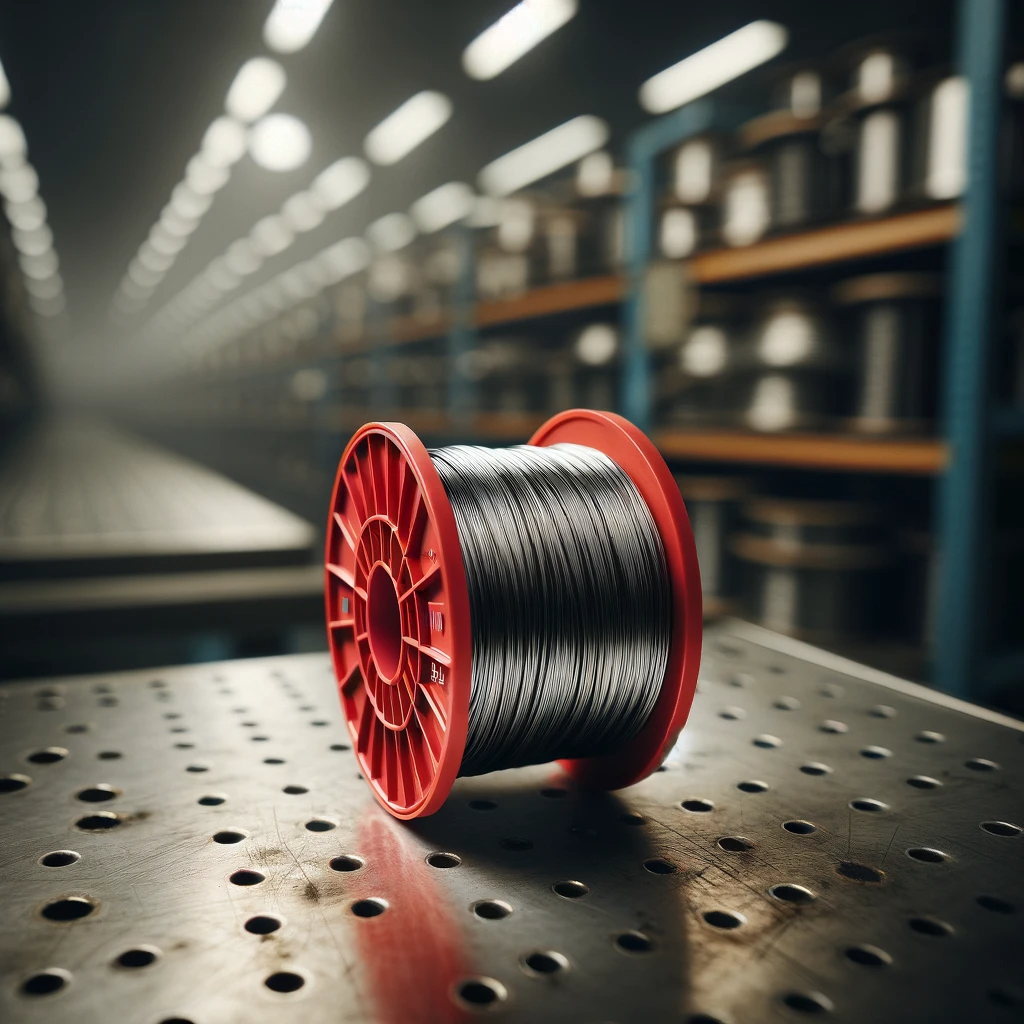
Applications and Heat Management
In applications requiring high heat, nichrome wire is extensively used. As well as domestic appliances like toasters, hair dryers, and space heaters, it is also used in industrial equipment like kilns and industrial furnaces. Due to its ability to withstand high temperatures without oxidising or losing tensile strength, this wire is ideal for these applications.
Nichrome wire is used in resistors and other components in electronics due to its predictable and stable resistance. Pyrotechnics and ignition systems can also benefit from its heat tolerance.
Managing and controlling the temperature in these applications is crucial. Often, this is achieved by carefully selecting the gauge and length of the wire, which determines its resistance and, thus, the amount of heat it generates. Alternatively, electronic thermostats or rheostats can be used to regulate the current flowing through the wire, providing precise temperature control. To ensure safety and efficiency in industrial settings, more sophisticated temperature control systems are employed.
Safety Considerations When Handling Hot Nichrome Wire
Working with Nichrome wire, especially at high temperatures, demands caution. Here are some safety considerations:
Heat Protection: Handling hot Nichrome wire should always be done with heat-resistant gloves to prevent burns from occurring.
Avoid Inhaling Fumes: If you are working with Nichrome, be sure to have good ventilation in your workspace, as when heated, it can emit fumes.
Electrical Safety: You should take precautions to ensure electrical safety, especially when Nichrome wire is used as part of an electrical circuit. Always disconnect the power before handling.
Proper Storage: It is recommended that you store Nichrome wire in a dry, safe place away from materials that can catch fire.
Disposal: Considering the high temperature exposure and potential contamination of Nichrome wire, it is important to dispose of it responsibly.
Testing and Monitoring Nichrome Wire Temperatures
Accurate temperature testing and monitoring of Nichrome wire are crucial for both safety and functionality. Common methods include:
Thermocouples: In order to provide real-time temperature readings, these devices are attached directly to the wire or the device.
Infrared Thermometers: This is a useful device for non-contact temperature measurement, especially in hard-to-reach areas or in areas with moving components.
Thermal Cameras: The temperature distribution along the wire can be visually visualised, allowing for the identification of hotspots or uneven heating along the wire.
As a result of constant monitoring, you can be assured that the Nichrome wire operates within a safe and efficient temperature range, which prevents overheating and potential hazards.
Due to its ability to withstand and generate high temperatures, nickel wire is indispensable in many heating and electrical applications.
Working with this material requires an understanding of its temperature capabilities and how to manage them safely.
Using Nichrome wire safely and efficiently requires proper handling, monitoring, and control.
Available Nichrome Wire Options:
| Ni80 | Ni80 | Ni90 | Ni90 | Ni60 | Ni60 |
| Diameter (mm) | AWG | Diameter (mm) | AWG | Diameter (mm) | AWG |
| 0.05 | 44 | ||||
| 0.06 | 42 | ||||
| 0.07 | 41 | ||||
| 0.08 | 40 | 0.08 | 40 | ||
| 0.09 | 39 | ||||
| 0.1 | 38 | 0.1 | 38 | ||
| 0.12 | 36 | ||||
| 0.125 | 36 | ||||
| 0.13 | 36 | 0.13 | 36 | ||
| 0.14 | 35 | ||||
| 0.15 | 35 | ||||
| 0.16 | 34 | ||||
| 0.17 | 34 | ||||
| 0.18 | 33 | ||||
| 0.2 | 32 | 0.2 | 32 | ||
| 0.21 | 32 | ||||
| 0.23 | 31 | ||||
| 0.25 | 30 | 0.25 | 30 | 0.25 | 30 |
| 0.27 | 29 | ||||
| 0.28 | 29 | ||||
| 0.29 | 29 | ||||
| 0.3 | 29 | 0.3 | 29 | ||
| 0.32 | 28 | 0.32 | 28 | 0.32 | 28 |
| 0.35 | 28 | ||||
| 0.37 | 27 | 0.37 | 27 | ||
| 0.38 | 27 | ||||
| 0.4 | 26 | 0.4 | 26 | 0.4 | 26 |
| 0.42 | 26 | ||||
| 0.45 | 25 | 0.44 | 25 | ||
| 0.5 | 24 | 0.5 | 24 | 0.5 | 24 |
| 0.54 | 23 | ||||
| 0.6 | 22 | 0.6 | 22 | ||
| 0.64 | 22 | 0.64 | 22 | ||
| 0.7 | 21 | 0.72 | 21 | ||
| 0.8 | 20 | 0.81 | 20 | 0.8 | 20 |
| 0.9 | 19 | 0.9 | 19 | 0.9 | 19 |
| 1 | 18 | ||||
| 1.15 | 17 |
For more insights on Nichrome wire or to explore a range of high-quality materials for your projects, visit our website at www.wireandstuff.co.uk.
Our experts are ready to assist with advice and provide premium Nichrome wire tailored to your specific requirements.
Contact us today for your Nichrome wire needs.
We offer also a massive range of stainless steel wire and nichrome wire through our store. Choose the wire that you want to work with and we’ll get spooling.
If you’re interested in learning more about wire, check out our other blog on Everything You Need to Know About Wires.
We are also proud to supply this product on our highly popular eBay store, check us out there too.
Thank you for checking out our site.
- MULTIBUY SAVINGS – ORDER 5 FOR 20% OFF
- FREE UK Delivery For All Orders Over £25
- Immediate Express Dispatch From Stock
- Orders Fulfilled From Warrington, UK
- Tracked Delivery with Order Updates
- 30-Day Unused Returns Accepted

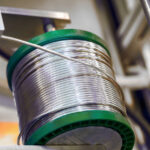
Nichrome Wire Safety: Top Tips for Working Safely
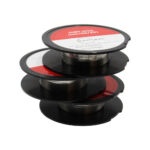
Best Wire for Electronics Projects
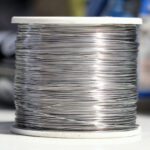
Is Ni80 Wire Suitable for DIY Heating Elements
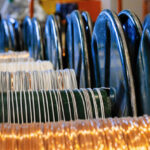
Wire Grades Explained
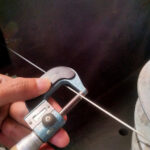
How Wire Diameter Affects Strength and Flexibility
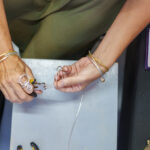
How to Cut and Shape Wire for Custom Applications

Can Wire Be Used in 3D Printing?
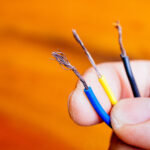
How Wire Composition Affects Conductivity
